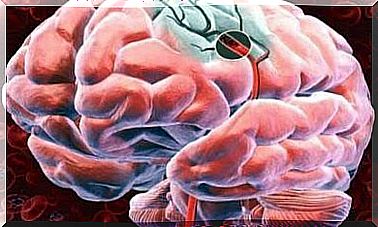5 Signs Of Appendicitis
Recent studies show that the appendix harbors benign germs that are very important for colonization of the intestines. The appendix is not essential for survival, but it could support the body’s own defense system.

Today’s article is about the signs of appendicitis. It is very important to identify these as soon as possible so that no more serious follow-up problems arise.
Inflammation of the appendix is very common. In this case, the appendix is surgically removed. Nowadays it is a routine operation that enables those affected to live symptom-free without appendages.
But what are the tasks of the appendix? Recent studies show that it harbors benign germs that are very important for colonization in the intestines. The appendix is not essential for survival, but it could support the body’s own defense system.
In young children, it could also play an important role in the development of the immune system.
Appendicitis usually occurs when it becomes clogged with foreign matter. It can happen at any time, but this disease usually occurs between the ages of 10 and 35.
The signs of appendicitis are wide-ranging. Therefore, it is not always easy to make a correct diagnosis. Symptoms can easily be confused, especially in children and the elderly.
5 common signs of appendicitis

Early diagnosis is important to prevent inflammation of the peritoneum (peritonitis). Because this could be life-threatening. So be careful, because we will explain what signs you should look out for afterwards:
1. Acute abdominal pain
Signs of appendicitis include abdominal pain around the belly button. These can become more and more intense over time and then become unbearable.
Most of the time the pain moves to the lower right abdominal area. This can be very uncomfortable, especially when coughing, running or making sudden movements.
Sometimes the pain is also expressed on the left side. This mostly happens when the colon is longer than normal. It then expands and you will feel pain in that area.
2. Nausea, vomiting and fever
You may also experience nausea and fever a few hours after the abdominal pain starts. In this case, you should get a medical examination to get to the bottom of the exact causes:
3. diarrhea

Appendicitis is usually accompanied by diarrhea, constipation and painful urination. These are very common signs of appendicitis.
4. Symptoms do not get better over time
If the pain continues and gets even worse, a doctor visit is due! You may find it difficult to get up or walk. Then the best thing to do is get yourself taken to the hospital.
5. Sensitivity to touch
If the pain gets worse as soon as you touch the stomach, there is a high possibility that you have appendicitis. In this case, too, you should see a doctor as soon as possible!
Don’t waste time

If you experience symptoms of appendicitis, you should definitely see a doctor or hospital as soon as possible to prevent more serious problems.
After the diagnosis, a routine operation to remove the appendix is usually performed.
recommendations
The best thing to do is to go to the hospital straight away for diagnosis. Do not treat yourself with medication, laxatives, poultices, or other techniques. You should also not eat or drink anything until you have been examined by a doctor.
A high-fiber diet can be helpful as a preventive measure. But appendicitis cannot always be prevented with it. Because other factors also play a role.
Also, keep in mind that these symptoms may not always appear. In an appendicitis there is sometimes easy to nausea and malaise.









